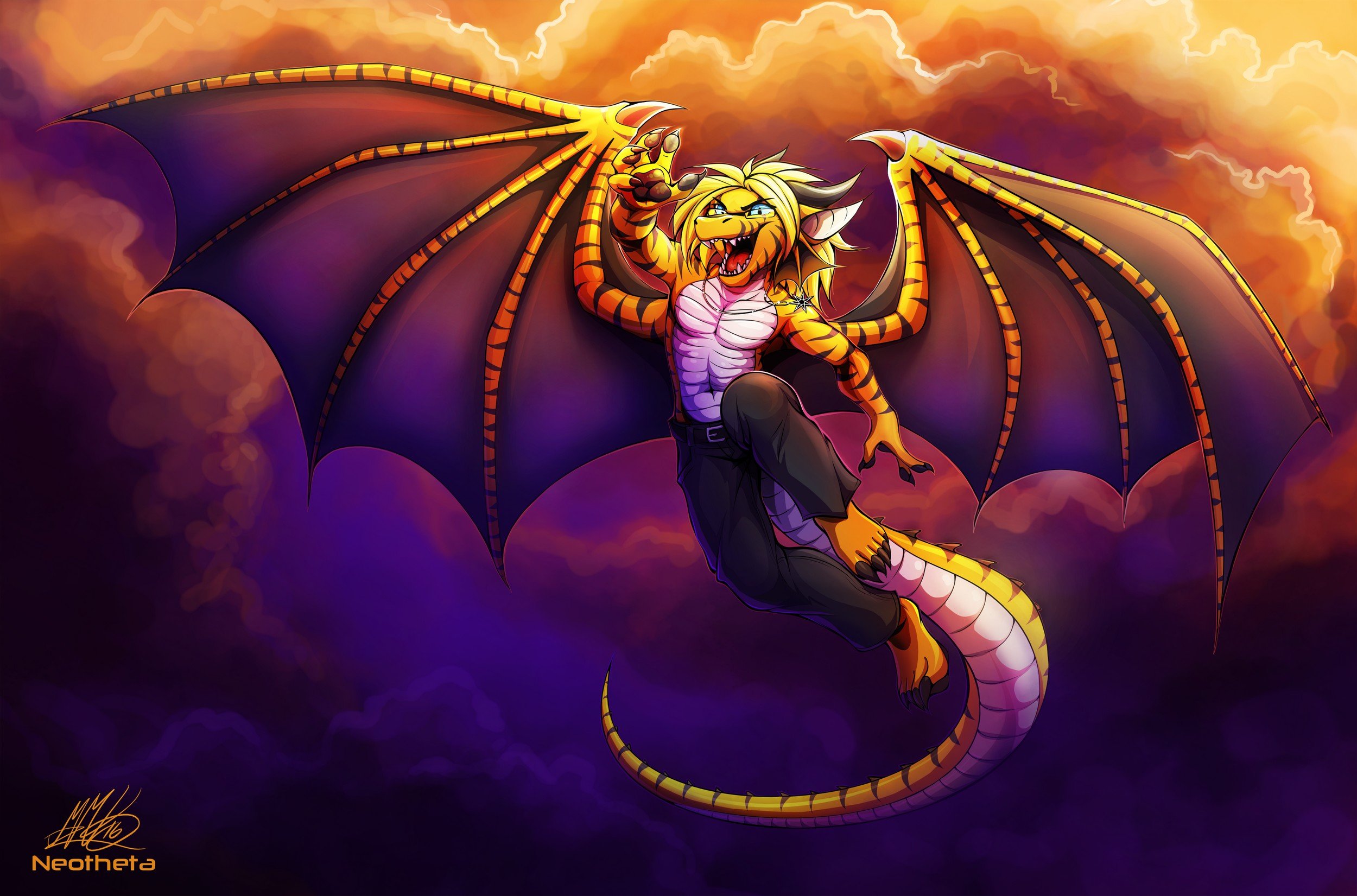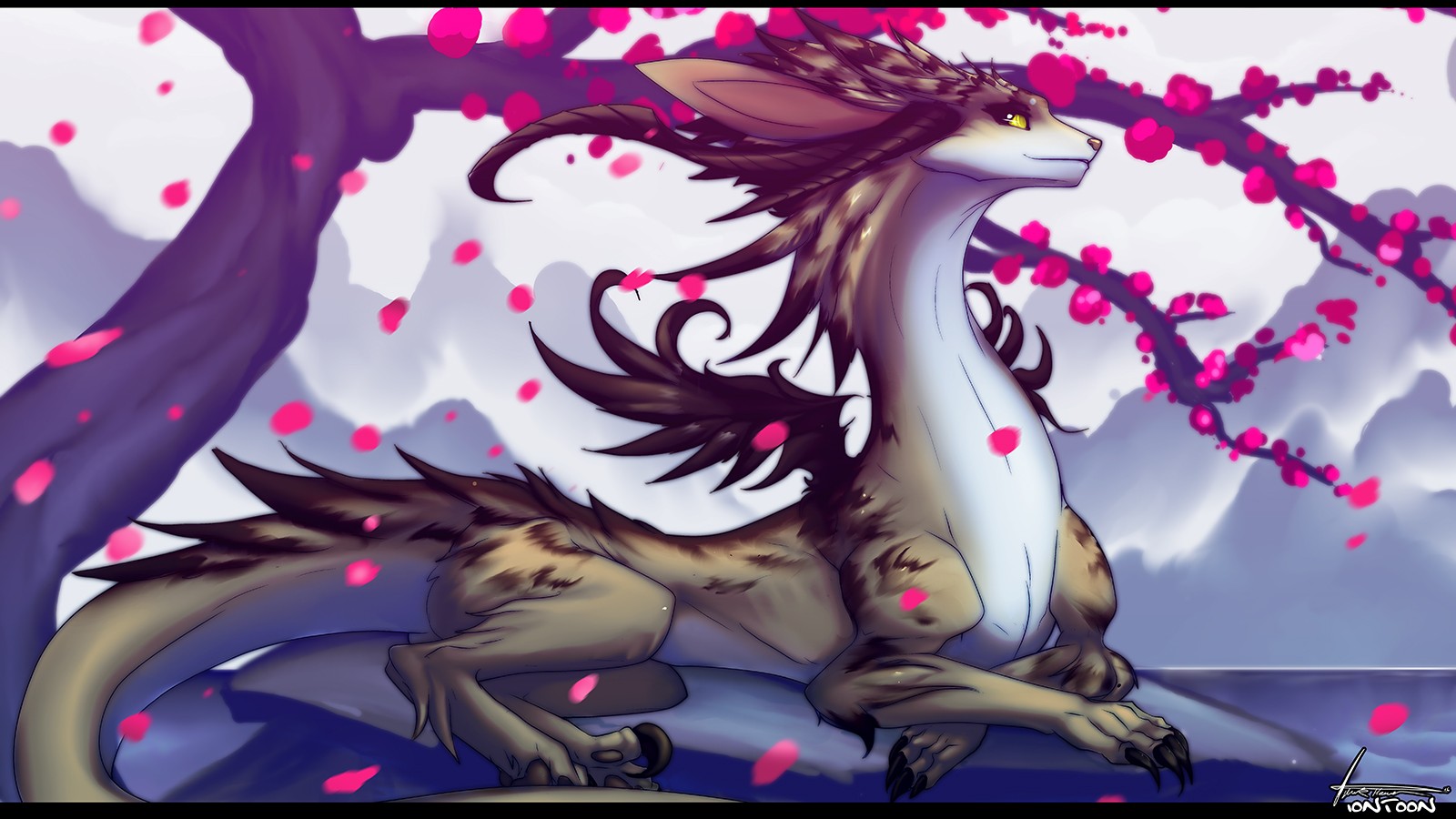
Sivath by Blacktalons Anthro dragon, Dragon pictures, Fantasy dragon
The Adaptable Fur of White-Tailed Deer. As the seasons change in Wisconsin, the fur of a few mammals also goes through a change. One of our most common mammals, the white-tailed deer, has this change twice a year. In summer, their fur is red in color with short guard hair and no ground hair. Even though there are twice as many guard hairs in.

Lothar the Frost Dragon by FluffyLothar on DeviantArt
It is different from other dragons because it has only three toes on each leg. The Ryujin dragon is depicted without wings, covered with scales, with short legs and horns. It is usually associated with water, clouds or sky. There are 6 types of Japanese dragons, they are : Sui-Riu, is the Japanese dragon king.

Pin by Саша Карпов on драконы Dragon art, Furry art, Mythical creatures
The Chinese dragon, also known as the loong, long or lung (simplified Chinese: 龙; traditional Chinese: 龍; pinyin: lóng), is a legendary creature in Chinese mythology, Chinese folklore, and Chinese culture at large. Chinese dragons have many animal-like forms such as turtles and fish, but are most commonly depicted as snake-like with four legs..

Furry Dragon For Silverfan118Furry by Blackalphadragon96 on DeviantArt
Dragon types are the general body classifications found on Dragon Cave. These types include standard dragons, two-headed dragons, pygmy dragons, drakes, and non-dragon creatures. Each dragon type is only capable of breeding within their own type group. Two-headed dragons may only breed with other two-headed dragons, pygmies with pygmies, and drakes with drakes. Non-dragon creatures are not.

Benjamin the Fur Dragon by Ravica on DeviantArt Animal art, Dragon, Art
Indigenous Japanese dragons Kiyohime Changes from a Dragon into a human woman, by Yoshitoshi Tsukioka The Dragon King's daughter, whose father the Dragon King lives at the bottom of the sea. By Utagawa Kuniyoshi. The c. 680 AD Kojiki and the c. 720 AD Nihongi mytho-histories have the first Japanese textual references to dragons. "In the oldest annals the dragons are mentioned in various ways.

furry dragon by Tacimur on DeviantArt
Rules for The FurryDragon's group: Dragon's MUST have fur somewhere on the body, head, or tail. It can be as simple as Fur along the back line, like some Eastern Dragons. Or as Exaggerated as fur all over the body, head, or tail. Anthro dragons are welcome, along with alien like ones too, but they have to have fur somewhere on them.

Anthro, Furry, Dragon HD Wallpapers / Desktop and Mobile Images & Photos
Yes. Ensistura. • 2 yr. ago. A dragon with fur is so general there's no real reason to make it a 'species', so it's just dragons with fur. [deleted] • 2 yr. ago. Never heard a scientific name so why not make one up? Draconus Crinitus. Draconus would be the scientific family dragons belong to and crinitus is fluffy in Latin :3.

Furry Dragon by Yuliya A. AdorableDragons
Secondly, East Asian dragons do not have furs in the usual sense of the word, although they are often depicted with beards or manes.Canonically, the body of the Chinese dragon (from which Japanese, Korean and Vietnamese dragons originate) have fish like scales.While the exact appearance have varied over time, the fish scaled body has remained a constant feature of dragons in the Far Eastern.

ArtStation Baby fur dragon
Feathers scales and fur! Both! I like dragons in general, though naturally it depends on their design overall (and yeah, don't forget about the feathered ones!) Fully and scales get the beat of bath world. If its a dragon I prefer just scale's non-winged. Both, feathers too even!

Pinterest Белый дракон, Изображение дракона, Китайский дракон
Albanian dragons Bolla: In the Albanian mythology * Bolla (also known as Bullar in South Albania), is a type of serpentic dragon (or a demonic dragon-like creature) with a long, coiled, serpentine body, four legs and small wings in ancient Albanian folklore.This dragon sleeps throughout the whole year, only to wake on Saint George's Day, where its faceted silver eyes peer into the world.

Pin by Douglas King on Dragons Dragon artwork fantasy, Dragon pictures, Fantasy dragon
Dogs have long provided research fodder for scientists, and the documentary claims research on cats lags 15 years behind work done on the canine front. What we do know suggests a sharp little mind.

Fur Dragon WIP by silverfang07 on DeviantArt
Light Up Fur Fur Hood Scarf - Siberian Fox Natural Colors Faux Fur Scoodie - Burning Man costume LED light up fur hood -Dragon Feather Int (162) $ 150.00. Add to Favorites Handsome Mid Century Vintage Black Fur Felt Fedora with Feather, As Found in Palm Springs Vintage Flea Market (853) $ 45.00. Add to Favorites.

+ Furry dragon + by Apsaravis Fantasy Art Pinterest
The green dragon is also called the azure dragon. It is one of the four great beasts in Chinese mythology (the Black Tortoise, Vermilion Bird, White Tiger, and Azure Dragon) representing the four directions (north, south, west, and east) respectively. The green dragon represents the east and controls rain and wind.

Fantasy Creatures Art, Mythical Creatures Art, Mythological Creatures, Magical Creatures
1. Wyvern. Carlisle City Council, Coat of Arms. 1. This type of dragon originated in Europe. 2. Nearly always depicted as having two bird-like legs and two wings, sometimes with eagle's claws on the wingtips. 3. Some had a serpent's head and the hind end of a serpent or lizard.

A Dragon with Fur by RuthTay on DeviantArt
Eastern dragons are rarely portrayed with wings in traditional art and folklore, but when they are, they tend to have the feathered variety. One example from Japan is the shifun, which resembles an eastern dragon with the wings, tail and claws of a bird — or alternatively a giant bird with a dragon's head.; Western dragons were depicted with feathered wings in the early middle ages, before.

furry, Dragon Wallpapers HD / Desktop and Mobile Backgrounds
These animals include the dinosaur, the Goanna, Nile crocodile, and whales. Some scholars like David E. Jones argue in his book "An Instinct for Dragons" (2000) that the human brain creates the existence of dragons. He further explains that this comes from the inner fear of snakes and large cats.